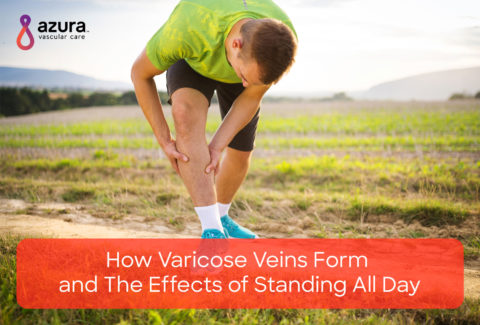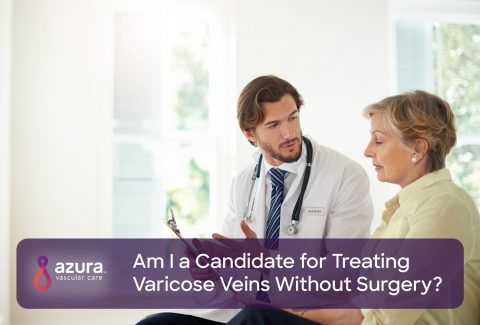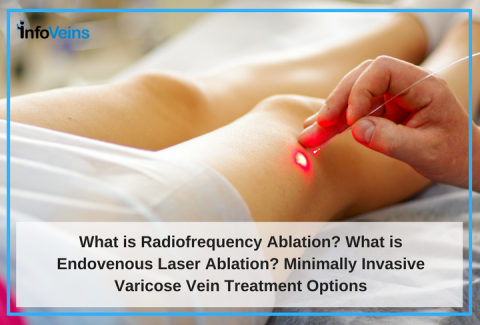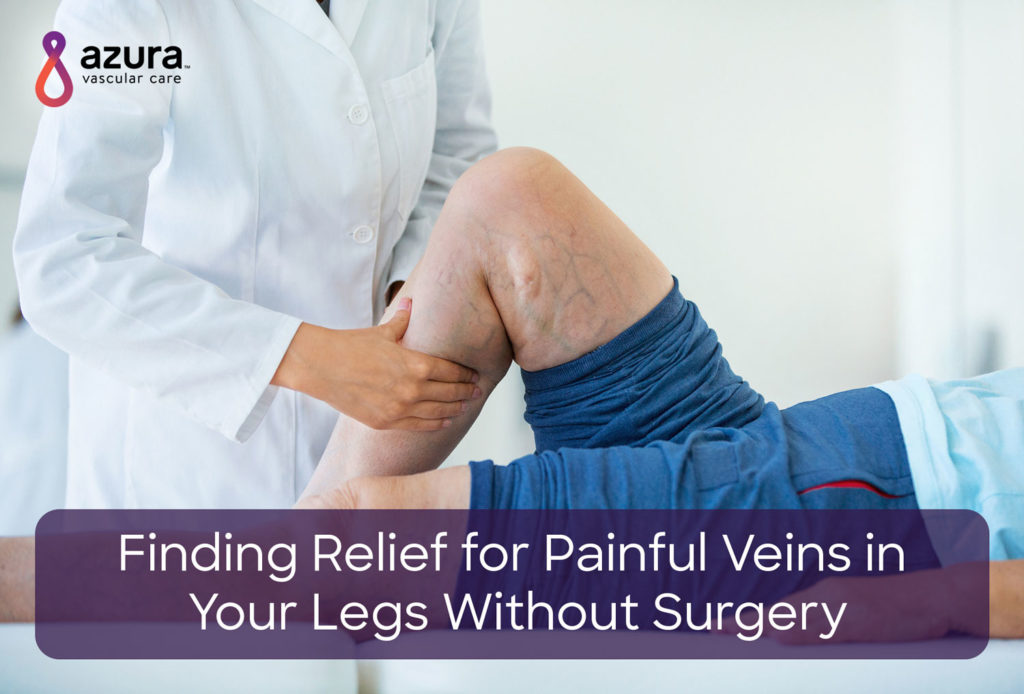
Are you tired of the pain in your legs caused by varicose veins? If you continue to suffer from symptoms including swelling, bleeding and aching leg pain, and have hesitated seeking treatment because you think surgery is your only option, this article will have good news for you.
Many people avoid seeking treatment because they want to avoid what they think is the inevitable prospect of surgery. Maybe a friend or relative had varicose vein surgery years ago and it wasn’t a great experience. Well, times have changed. Now, there are safe, effective, minimally invasive treatment options for varicose veins that do not involve surgery.
In the United States, it’s estimated that about 33 million adults between 40 and 80 years old have varicose veins. i
What Causes Painful Varicose Veins In Your Legs and Why?
There are two major types of blood vessels in the body: arteries and veins.
Arteries carry blood from the heart, and veins are the blood vessels that carry blood back to the heart. There are valves inside the veins that open and close to help propel blood to flow back towards the heart. When these valves fail, or become dysfunctional, they do not open and close in the normal manner. This dysfunction allows blood intended to flow towards the heart to instead flow backward and pool, particularly in the lower extremities. This backflow and pooling of blood can result in the formation of painful veins in the legs, or varicose veins.
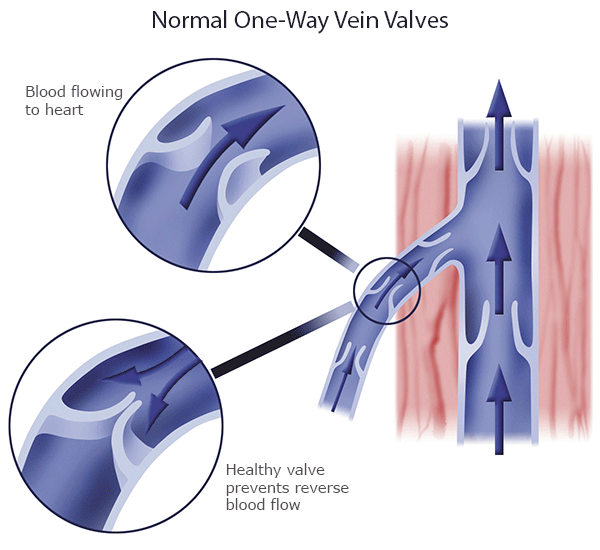
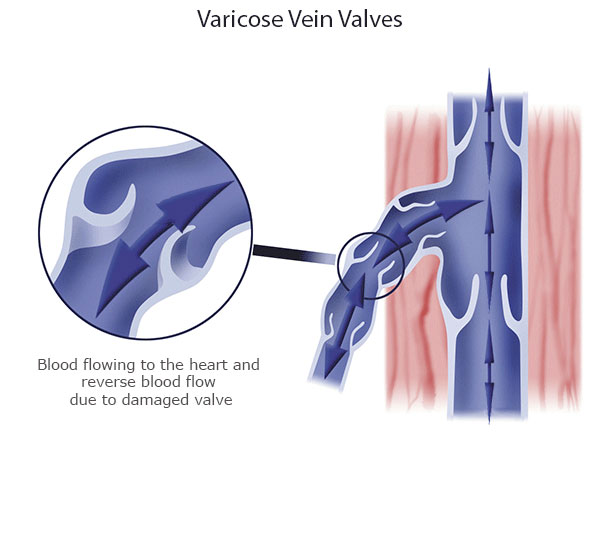 There are many possible reasons why these valves may stop working, and age does play a role. ii As blood leaks backwards through the valve, pressure increases in the veins, and the vein walls start to bulge. Because blood has to travel so much further from our feet to our heart, varicose veins are more likely to occur in the legs. iii
There are many possible reasons why these valves may stop working, and age does play a role. ii As blood leaks backwards through the valve, pressure increases in the veins, and the vein walls start to bulge. Because blood has to travel so much further from our feet to our heart, varicose veins are more likely to occur in the legs. iii
For some people, the biggest concern with varicose veins is they feel that their legs are less attractive, but varicose veins can also cause pain and other issues, such as:
- Swelling
- Throbbing or burning in your legs
- Changes in the skin, such as hardening or a change in color
- Itching
- Sores that take a long time to get better
- Bleeding that is hard to stop when you get a cut on your legs around the veins
- Blood clots
If you have varicose veins, or think you have varicose veins, and you have related pain or other symptoms, you should talk to your doctor. Before more aggressive treatment plans, many doctors recommend you should start with completely noninvasive options like:
- Wearing compression stockings – These special elastic socks help support the veins and prevent swelling. You can get them from a drug store, or your doctor may want to prescribe them for you. You need to put them on first thing in the morning when you get out of bed, and wear them until you go to bed at night.
- Walking regularly – Walking or other forms of exercise that involve moving your legs can help push the blood along.
- Putting your legs up – Elevating your legs throughout the day, by putting them up above the level of your heart, helps the blood flow more easily back to your heart. Doing this 4 times a day for about 30 minutes each time is the usual recommendation.
- Losing weight – If you have excess weight, losing it can decrease the pressure your weight places on your veins. iv
Treating Painful Veins in Your Legs Without Surgery
Varicose vein surgery was the main treatment performed for many years. It involves tying off the veins and stripping them, or pulling them out.
While surgery can work for some people, the recovery can be long and painful, and the veins eventually come back about half of the time. i Today, Interventional Radiologists and other Vascular Specialists utilize minimally invasive techniques to treat varicose veins; they perform several treatment options for varicose veins that do not involve surgery.
- Endovenous ablation – Using a fiber laser or radiofrequency waves, the inside of the varicose vein is treated during this procedure. The treated varicose veins should disappear.
- Microphlebectomy – Also known as ambulatory phlebectomy, small nicks are made around the veins and a special tool is used to pull the varicose veins out. This is often done along with endovenous ablation as part of an overall plan for treating varicose veins.
- Sclerotherapy – A chemical is injected into the small superficial veins which blocks them off. This is often a good treatment option for spider veins, which are smaller varicose veins and a cosmetic problem, but it does not work for larger veins. v
As you can see, you have other options besides surgery to treat those painful veins in the legs known as varicose veins. The only way to find out if your varicose veins can be treated without surgery is to make an appointment with an Interventional Radiologist or other Vascular Specialist who specializes in these minimally invasive treatment options. During your consultation, your medical history, medications, supplements and allergies, will be reviewed to help determine if you’re a good candidate for a minimally invasive treatment for your varicose veins.
Sources:
i Piazza, G., Varicose Veins. Circulation, 2014. 130: p. 582-587. http://circ.ahajournals.org/content/130/7/582.long \
ii National Heart, Lung and Blood Institute. Who Is at Risk for Varicose Veins? https://www.nhlbi.nih.gov/health/health-topics/topics/vv/atrisk (updated 1/29/2016, accessed 11/30/2016)
iii Mayo Clinic. Varicose Veins Overview. http://www.mayoclinic.org/diseases-conditions/varicose-veins/home/ovc-20178078 (updated 1/22/2016, accessed 11/30/2016)
iv Lin, F., Zhang, S., Sun, Y., Ren, S., Liu, P., The Management of Varicose Veins. Int Surg, 2015. 100: p. 185-189. https://www.ncbi.nlm.nih.gov/pmc/articles/PMC4301287/
v Spinedi, L., Uthoff, H., Partovi, S., Staub, D. Varicosities of the lower extremity, new approaches: cosmetic or therapeutic needs? Swiss Med Wkly, 2016. 146:214360 http://www.smw.ch/scripts/stream_pdf.php?doi=smw-2016-14360

